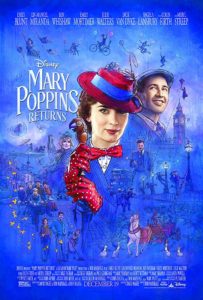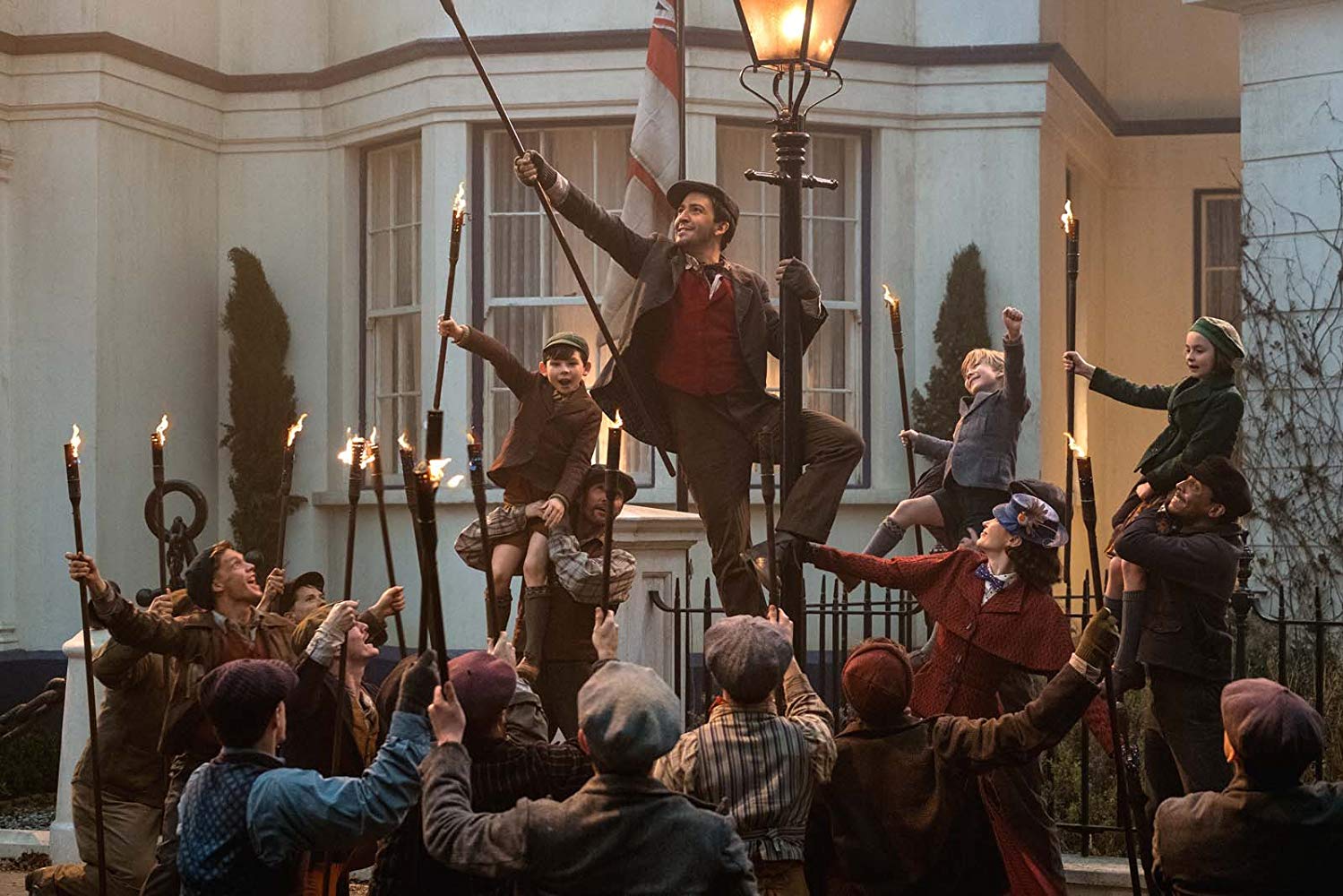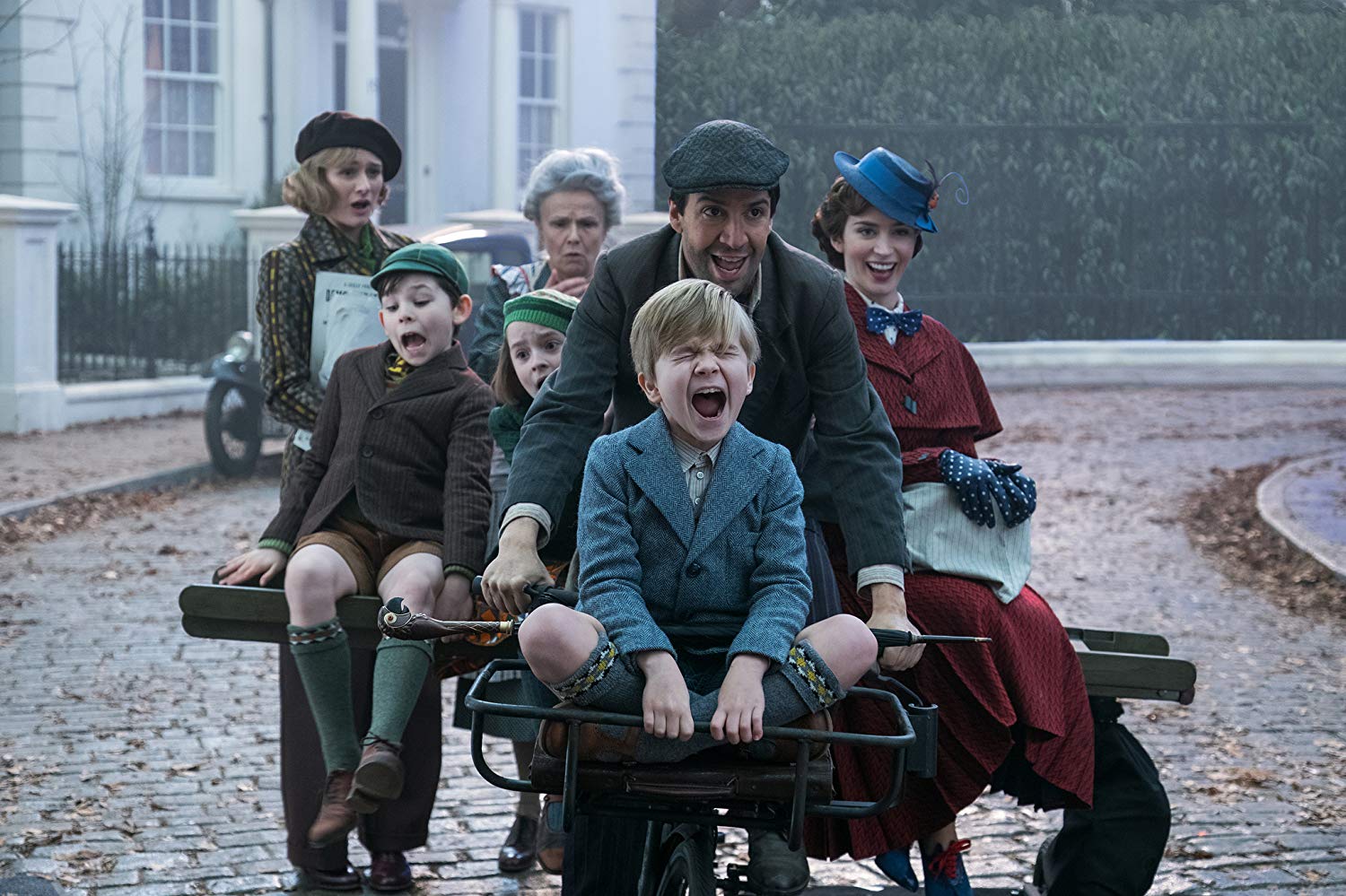Mary Poppins Returns With a Marvelous, Mystical, Classical Musical
DIRECTED BY ROB MARSHALL/2018

I suspect many others will call Mary Poppins Returns “practically perfect in every way,” so let me call it simply sensational, standing ovational, highly acclaimable, and lavishing praisable. Those fauxiliary-adverbial English acclamations come from one of the most stand-out musical numbers of the film, “The Royal Doulton Music Hall,” but that song began well after Mary’s magic had taken me.
After tearing up in the second song, I found myself thinking during the third, “Even if the rest of this movie is horrid, it will be worth it just for what I’ve seen so far,” which is not a thought I think too often. (The opening freeway song in La La Land is another instance of that rare notion.) But what I had already seen, what I had already felt, what I had already thought—well, that was already more magical than I hoped for.
For in that third musical number (“Can You Imagine That?”), the return of Mary Poppins evoked a spirit of classic musicals I haven’t seen anywhere as of late but Turner Classic Movies. (True opening credits! With an overture!) Like Gene Kelly in an out-of-time ballet dream, Judy Garland in a Technicolor dream, or yes, Julie Andrews in a supernatural, sugary one, it crafts bombastic music, fanciful images, and unselfconscious emotion into stuff and nonsense cinema has forgotten about as much as the Banks forgot about Mary Poppins.

The Banks children we met in 1964 are all grown up now, which means Michael (Ben Whishaw) and Jane (Emily Mortimer) are facing quite the grown up problems. Michael and his children Anabel (Pixie Davies), Georgie (Joel Dawson), and John (Nathanael Saleh) still ache after the loss of the family’s wife and mother in the last year. With only five days until the bank repossesses their home, they need a miracle—nay, a magical nanny—to rescue them.
The story is strong and original enough to fly on its own.
And Emily Blunt is one magical reprisal of one of the most famous nannies in film and literature. Begging for comparison with Julie Andrews can be unforgiving (just ask Audrey Hepburn), but Blunt’s take is just as droll and warm and, well, blunt as you remember. Not that the film coasts on her charm alone. Lin-Manuel Miranda, you might have heard, is one talented fellow, and his mastery of fast-paced lyrics and footwork is more than enough for a successor to Dick Van Dyke. The quiet MVP of this cast is Whishaw, whose teddy bear eyes were the biggest factor in making mine swell with tears (at least four or five times, depending on how you count). Michael’s cardigan-covered broken heart provides the strongest heartbeat in this story, and Whishaw keeps it from turning into false schmaltz.

But perhaps the biggest surprise is not in the cast, but in the story itself. Returns echoes the original Poppins expertly, with “Doulton Musical Hall” serving as a mirror to “Supercalifragilisticexpialidocious” and the lamplighters’ “Trip a Little Light Fantastic” reflecting the chimney sweeps’ “Step in Time.” That said, Returns isn’t nostalgic. The story is strong and original enough to fly on its own because Mary has come to the Banks with a new lesson, not as many sequels are wont to do. (See this summer’s charming but predictable The Incredibles 2 for an example of that.) Her first visit was to show the Banks family how to overcome pride, but she has returned now to help them overcome grief. She still uses wit, silliness, and dance to restore their joy, and her rhyme, onomatopoeia, and alliteration are as sharp as ever, but she’s not teaching from the same syllabus as before.
Mary and Bert’s tunes have had almost 60 years to permeate into our cultural consciousness, and considering I whistled, sung, and hummed a mash-up of “A Spoonful of Sugar” with Mary and Jack’s (Miranda) “Nowhere to Go But Up” all the way home, I suspect these songs could have the same staying power. Mary Poppins Returns know what it wants to be, and is exactly that—how marvelous, mystical, and rather sophistical.

